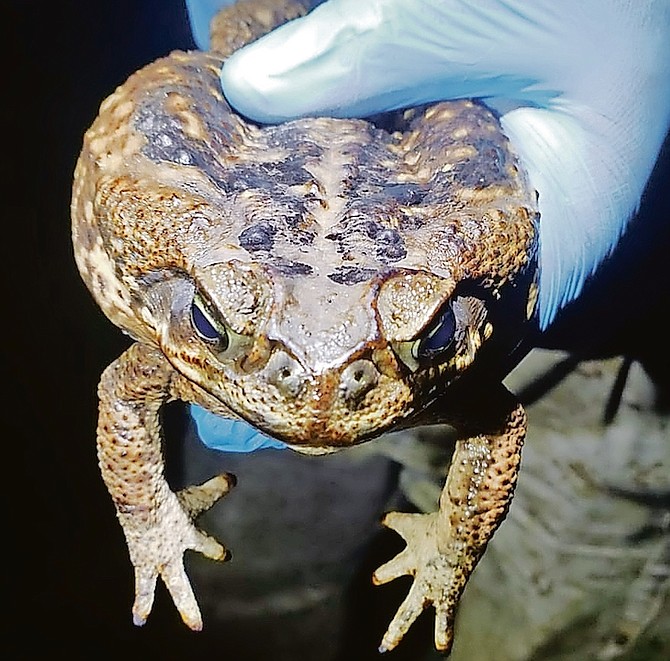The Bahamas is grappling with the escalating presence of cane toads, an invasive species that has firmly established itself in the nation’s ecosystem. Local experts warn that the toads, which have been increasingly spotted across New Providence, pose significant risks to pets, wildlife, and even humans. Deon Gibson, general manager of the Bahamas Agriculture and Marine Science Institute (BAMSI), noted a sharp rise in cane toad sightings in both western and eastern parts of the island. He urged residents to euthanize the toads by sealing them in bags and freezing them or using long tools like pitchforks to avoid direct contact. Dr. Ancilleno Davis, an assistant professor at the University of The Bahamas, emphasized that eradication is no longer feasible. ‘It is impossible to kill off all the cane toads,’ he stated. ‘We must learn to coexist with them and educate communities, especially children and pet owners.’ The toads’ rapid reproduction and lack of natural predators ensure their long-term survival. A single female can lay hundreds of thousands of eggs, and mature toads face minimal threats. However, their toxins are deadly to local wildlife and can cause severe reactions in humans, including nausea, vomiting, and even cardiac issues. Dr. Davis highlighted the ecological imbalance caused by the toads, which prey on native species and poison predators. ‘A stray dog or cat might think it’s an easy meal, but they will die,’ he explained. The surge in reported sightings is partly attributed to increased public awareness and the rapid dissemination of information online. Cane toads were first detected in western New Providence in 2013, and since then, multiple alerts and identification guides have been issued to combat their spread. Despite these efforts, the species’ impact on the Bahamas’ ecosystem and public safety remains a pressing concern.
